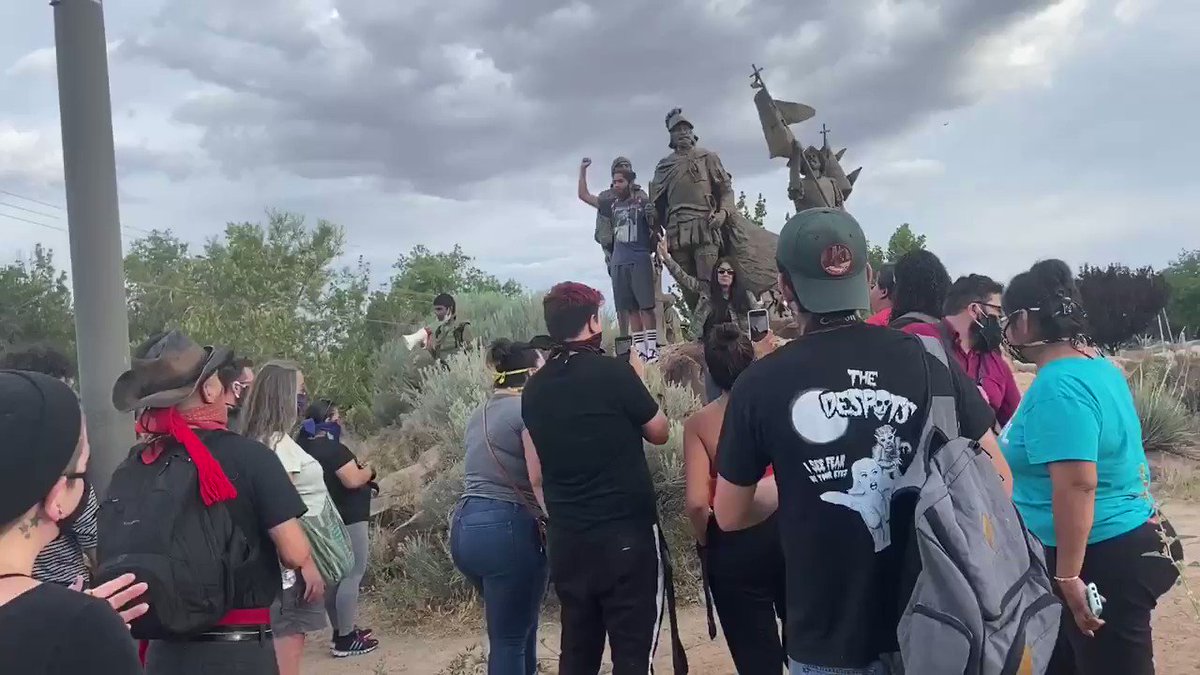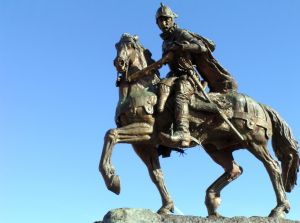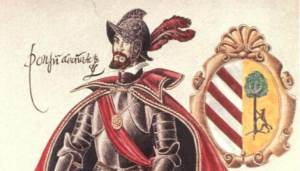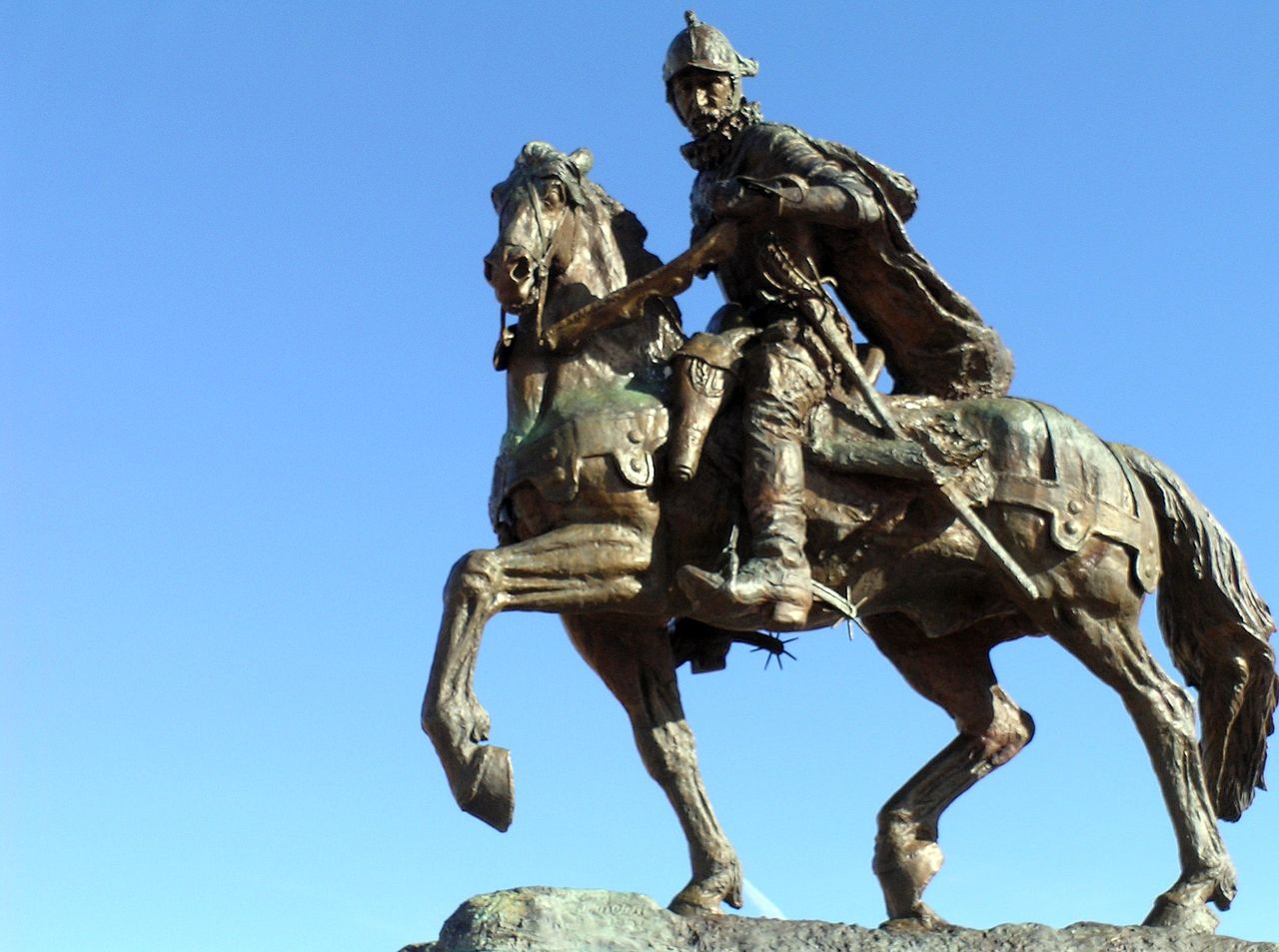Join Date: Feb 2011
Posts: 47,657
Thanks: 27,646
Thanked 14,458 Times in 10,262 Posts
|
 re: NAVAJO Elders: Hungry, Alone, & in Despair
re: NAVAJO Elders: Hungry, Alone, & in Despair
Native Americans in New Mexico Have Held Protests to Demand Effigies Glorifying Conquistadors Be Removed
Protests Target Spanish Colonial Statues That Celebrate Genocide in US West
The Guardian UK, 24 JUN 2020
 Than Tsídéh, 19, of the Ohkay Owingeh Pueblo dances on the empty platform where a statue of Juan de Oñate was removed. Photograph: Gabriela Campos/The Guardian
Than Tsídéh, 19, of the Ohkay Owingeh Pueblo dances on the empty platform where a statue of Juan de Oñate was removed. Photograph: Gabriela Campos/The Guardian
As a national debate swirls around statues of Confederate officials, a new battle is brewing in the western US over the fate of monuments glorifying the brutal Spanish conquest of the Americas.
They include effigies of Diego De Vargas, who ordered the execution of 70 Pueblo Indians and the enslavement of hundreds of women and children, and conquistador Juan De Oñate, who is known for ordering the massacre of 800 Acoma people and for the right feet of 24 captive Acoma warriors to be amputated.
Last week, officials in Rio Arriba county, 40 minutes north of Santa Fe, New Mexico, removed the first, a statue of Oñate. The likeness was taken down just hours before a protest was scheduled to demand its toppling.
“It’s a win,” said Luis Pena, who started a petition to remove the statue and stood near the concrete platform covered with blood-red handprints. “Symbols are important, they shape the way we ingest the world … In reclaiming these symbols, we get a chance to tell a side of history that has been left out of the books.”

Protesters surround a statue of Juan De Oñate, known for ordering the massacre of 800 Indigenous people, in Rio Arriba county, New Mexico. Photograph: Anthony Jackson/Albuquerque Journal/ZUMA/REX/Shutterstock
Yet the violence accompanying these protests is a reminder that, as elsewhere in the country, this historical reckoning is contentious.
A few hours after Pena spoke with the Guardian, trouble erupted in Albuquerque, when a possible militia member shot a protester as the group attempted to tear down another statue of Oñate.
The push to remove contested monuments began in the southern US, where 10 Confederate monuments have been removed in less than a month, according to Lecia Brooks, outreach director for the Southern Poverty Law Center, and four other removals are pending. Eight came down in the whole of 2019.
“There is this groundswell from the public that has led people to say these are symbols of white supremacy and they have to come down,” said Brooks.
New Mexico has become the center of this movement in the south-west. Oñate and his soldiers began the Spanish conquest of New Mexico, and the subjugation of its Indigenous peoples, in 1598. The state has long venerated its painful past. The names of conquistadors, like those of Confederate generals in the south, lend themselves to road names, schools, shopping centers and statues.
In northern New Mexico, people grew up with the pageantry of Fiestas De Santa Fe, an annual festival celebrating Spanish culture and conquest that includes school visits by conquistador reenactors.
As an elementary student in Santa Fe, Elena Ortiz, who is from the Ohkay Owingeh pueblo and is a member of social justice group Red Nation, refused to take part. “I remember being terrified they were going to try and get me to dance,” said Ortiz, referring to the parade through school that often involves the kids. “I knew this was not for us.”
Until 2018, the Fiestas included an event known as La Entrada, which celebrated the reconquest of New Mexico by Don Diego De Vargas following the Pueblo revolt, an indigenous uprising in 1680 that expelled the Spanish from New Mexico for 12 years. After sustained pressure, La Entrada was dropped.
“Who are we calling heroes?” asked Jennifer Marley, an indigenous activist who was arrested and then acquitted because of her protest against La Entrada. “It’s a celebration of genocide. An erasure of indigenous people.” .
Oñate, New Mexico’s first colonial governor, is likely the most controversial figure of all. In the late 1990s, a group of activists used a power saw to remove the right foot of Oñate in the middle of the night, gesturing to his mutilation of the Acoma warriors.
“We took the liberty of removing Oñate’s right foot on behalf of our brothers and sisters of Acoma Pueblo,” read a statement by the group. “We see no glory in celebrating Oñate’s fourth centennial, and we do not want our faces rubbed in it.”
“There is a situation where people celebrate warped, Eurocentric versions of history that ignore or vilify indigenous people and mestizos,” said Frank Pérez, a professor at the University of Texas-El Paso. “By celebrating Oñate, we overlook the trauma people have and continue to suffer,”

Proponents of the monuments have long argued that their removal equals an erasure of Hispanic culture. A right-wing blog recently launched an online petition asking the Santa Fe mayor to halt the removal of any more symbols of Spanish colonizers from the city, the Santa Fe New Mexican reported. The editor of the blog said it already has 1,500 signatures.
“The statues are part of the history of New Mexico (like it or not) when you take down a piece of history you take down a piece of us,” reads one of the blogposts in defense of keeping the monuments. “Not the bad, but the culture, the unique culture, and how we got here.”
Brooks, of the Southern Poverty Law Center, argued that the goal was not erasure, but rather a full accounting of the past.
“We are, in fact, erasing history by allowing one side of the story to be told without offering any context,” she said.
Last week the Santa Fe mayor announced the removal of three more contentious monuments in downtown Santa Fe. By Wednesday morning, the statue of Diego de Vargas had been removed from Cathedral park.
Two obelisks – one dedicated in part to “heroes” killed in battle by “savage Indians”, another to Kit Carson, a renowned trapper turned army colonel who waged war against the Navajo Nation – are to be removed soon. They are located in or near a city plaza where hundreds of Pueblo men were lynched following the Pueblo revolt.
For Ortiz, of the Ohkay Owingeh pueblo, what’s “finally” happening in New Mexico, reflects the larger national momentum around the issue of structural racism.
“I think it signifies a shift in consciousness,” she said. “Images and symbols of racial violence and inequality are now more evident to the public. And it was all triggered by the slaughter of so many black people.”
The Utmost Cruelty of Juan de Oñate, New Mexico’s First Governor (1598 – 1610)
24 June, 2020 CIVILIAN INTELLIGENCE NEWS SERVICE


Juan de Oñate y Salazar (1550–1626) was a Spanish conquistador from Mexico (then known as New Spain), explorer, and colonial governor of the province of Santa Fe de Nuevo México (present day New Mexico) in the viceroyalty of New Spain.
He led early Spanish expeditions to the Great Plains and Lower Colorado River Valley, encountering numerous indigenous tribes in their homelands there. Oñate founded settlements in the province, now in the Southwestern United States.
Today Oñate is known for the 1599 Acoma Massacre. Following a dispute that led to the death of thirteen Spaniards at the hands of the Ácoma, including Oñate’s nephew, Juan de Zaldívar, Oñate ordered a brutal retaliation against Acoma Pueblo. The Pueblo was destroyed. Around 800–1000 Ácoma were killed.
Of the 500 or so survivors, at a trial at Ohkay Owingeh, Oñate sentenced most to twenty years of forced “personal servitude” and additionally mandated that all men over the age of twenty-five have a foot cut off. He was eventually banished from
New Mexico and exiled from Mexico City for five years, convicted by the Spanish government of using “excessive force” against the Acoma people.

Today, Oñate remains a controversial figure in New Mexican history:
In 1998 the right foot was cut off a statue of the conquistador that stands in Alcalde, New Mexico in protest of the massacre, and significant controversy arose when a large equestrian statue of Oñate was erected in El Paso, Texas in 2006.
On June 15, 2020, the statue of Oñate in Alcalde, New Mexico was temporarily removed by Rio Arriba County workers at the direction of officials. Appropriate civic institutions will make the final decision on the statue’s future.
Juan de Oñate (also known as Don Juan de Oñate y Salazar, 1550 – 1626) was a famous Spanish explorer, conquistador and colonial governor who played a critical role in the exploration of the North American territories that are today part of American Southwest.
His most remembered exploits are visits to the Great Plains, Lower Colorado River Valley, claiming of territories in New Mexico and encountering of the many local Native American cultures (some who entered into fierce combat against him and his strict rule). Many historians refer to him as “The Last Conquistador”.
The Early life of Juan de Oñate started in the city of Zacatecas in today’s Mexico (then known as New Spain). He was the son of the Spanish-Basque colonist, silver mine owner, and conquistador Cristóbal de Oñate, and mother Doña Catalina Salazar y de la Cadena. Juan de Oñate married Isabel de Tolosa Cortés de Moctezuma, granddaughter of the most famous conquistador of all time Hernán Cortés, who destroyed the Aztec empire.
At the age of 48, Juan de Oñate started his career of exploration and colonization of unexplored lands deeper into the North American continent. The first journey away from New Mexico started in 1598 when he crossed the Rio Grande and started colonizing land and spreading Roman Catholicism to local natives.
He encountered Pueblo Indians, founded Province of Santa Fe, and fought in the large battle at Acoma against Pueblo People who did not want to hand over their entire winter supplies to Oñate’s expedition. In that battle, Oñate killed over 800 men, women, and children, and has enslaved remaining 500 (of which all men over 25 were punished with amputation of the left foot).
Next big expedition of Juan de Oñate started in 1601 when he set his sights on Great Plains. With the party of 130 experienced soldiers, 12 priests, and a retinue of servants, he started his quest to find the legendary city of gold. Of course, he did not find it, but he encountered Apache people, traveled to Oklahoma
Visited Escanjaques people, described the first encounter of tall grass prairie of central North America, and toward the end of the journey he encountered Rayados peoples, whose Chief Caratax led Oñate’s party across the land that was known to him. At the journey home, Juan de Oñate was involved in a large battle against Escanjaques people.
The final expedition of Juan de Oñate was focused on the Colorado River and involved only the small part of around 30 to 40 people. They traveled between the Rio Grande to the Gulf of California in 4 months, managing to bring back accounts of the area and suggestions about the establishment of a port in the Gulf of California.
In 1606, his days of exploration and land conquering ended after he was forced to return to Mexico City for hearing about his extreme cruelty to both natives and colonists. He was not jailed but eventually traveled back to Spain where he received the post of head of all mining inspectors by the order of Spanish King.
Born about 1550, probably in Zacatecas, Mexico, his parents were Spanish-Basque colonists and silver mine owners. His father, Cristobal de Oñate, was a conquistador, colonial official, and silver baron, who founded the city of Guadalajara, Mexico in 1531. His mother was Dona Catalina Salazar y de la Cadena. Juan de Oñate grew up to marry Isabel de Tolosa Cortes de Moctezuma, the granddaughter of Hernan Cortes.
After the 1588 defeat of his Armada, Spain’s King Philip II was eager to reestablish his country’s prestige and hoping to repeat the exploits of Hernan Cortes and Francisco Pizarro, ordered the viceroy of New Spain to organize an expedition to seek and colonize a rich civilization thought to lie north of Mexico. Another objective was to spread Roman Catholicism and establish new missions.
In 1595, the viceroy selected Juan de Oñate y Salazar to lead and finance the expedition. Despite Francisco Vasquez de Coronado’s failure to find golden cities of Cibola a half a century earlier, Oñate believed that he would find Gran Quivira. Oñate began the expedition in January 1598 with 400 settlers and soldiers, and their livestock.
The expedition crossed the Rio Grande at the present-day El Paso, Texas and on April 30, 1598, he claimed all of New Mexico for Spain. That summer his party continued up the Rio Grande to present-day northern New Mexico, where he encamped near the Tewa pueblo of San Juan and were helped by the local Indians.
Oñate’s group built San Gabriel, New Mexico’s first capital and became the province’s first governor. He also sent exploring parties westward to the vicinity of present-day Flagstaff, Arizona, and eastward to the vicinity of present-day Amarillo, Texas. After they realized that the area was not rich in silver, many settlers wanted to return to Mexico, but Oñate would not let them go and executed many of them.
He was also incredibly brutal to the local Indians, killing, enslaving, and mutilating hundreds of men, women, and children.
In 1601, Oñate himself led an exploration to find Quivira. In June his party followed the Canadian River eastward across the Texas Panhandle, entering Oklahoma, then northeast toward the Wichita Indian villages at the junction of the Arkansas and Little Arkansas Rivers, near present Wichita, Kansas. Like Coronado, he found only mud huts and hostile American Indians, and his disappointed troupe returned to New Mexico. While he was gone, most of his settlers returned to Mexico City.
Still determined, Oñate made his most ambitious expedition in 1605, following the Colorado River from near the Grand Canyon to the Gulf of California. When he returned to New Mexico in 1606, he found the colony in disarray. Later in 1606, due to continuing problems in the colony and mounting debt, Spain removed him from office and replaced him with Don Pedro de Peralta.
In 1609 he witnessed the founding of Santa Fe. In 1613, he traveled to Mexico City to defend himself against long-standing charges of mismanagement. There, he found himself charged with cruelty, immorality, mismanagement, dereliction of duties, and false reporting. He was fined and was banished from New Mexico for life and from Mexico City for four years. A short time later, he returned to Spain to clear his name and upon appeal, he was cleared of the charges.
Onate, sometimes called the “Last Conquistador,” died on June 3, 1626, in Spain. Gaspar Perez de Villagra, a captain of the expedition, chronicled Onate’s conquest of New Mexico’s indigenous peoples in his epic Historia de Nuevo Mexico from 1610.
A’ho !!:

|